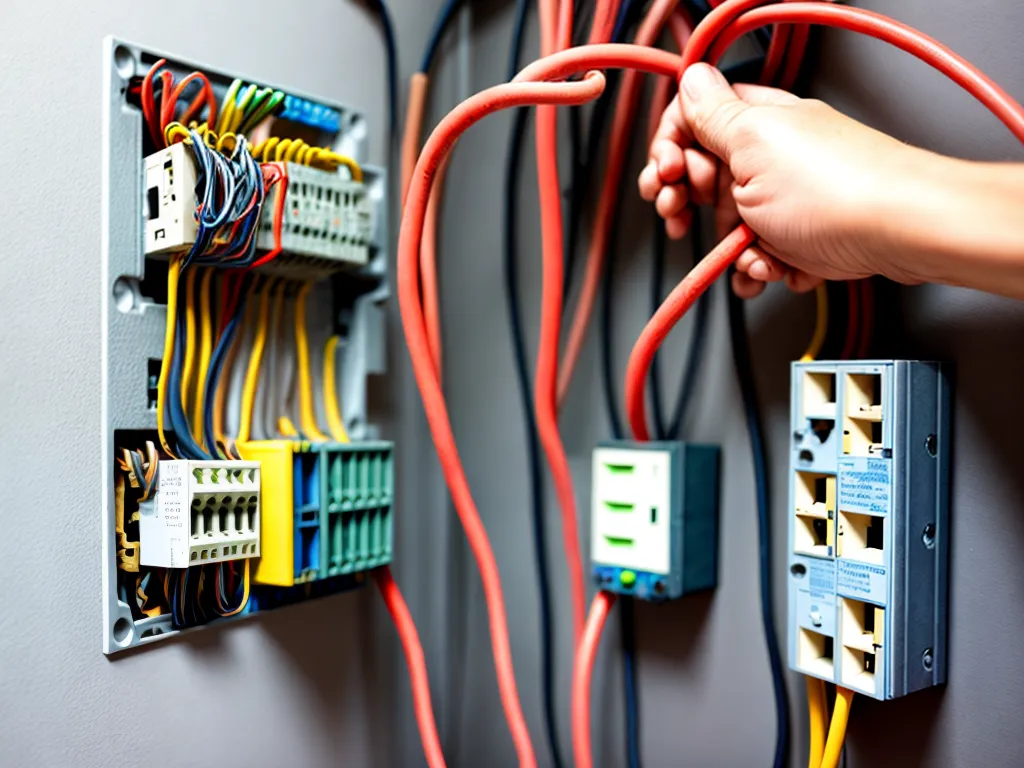
Introduction
Home electrical wiring is an important but often overlooked aspect of home maintenance. Most homeowners only think about their electrical systems when something goes wrong. However, paying attention to your home's wiring and electrical components can help prevent fires, power outages, and other hazards. In this article, I'll share 7 unconventional yet useful ways to think about home electrical wiring. Taking a fresh perspective on home electrical systems can help you better understand how your wiring works and how to keep it in top shape.
Inspect Your Electrical Panel
Your home's electrical panel, or breaker box, is the central nervous system of your electrical system. Getting familiar with your panel can provide useful insights into your home's circuits and wiring. Here are some things to inspect in your electrical panel:
Locate the Main Power Shutoff Switch
The main breaker shuts off power to your entire home. Know where it is so you can quickly cut power in an emergency.
Identify and Label Circuits
Trace wires from breakers and label what each circuit powers. This helps you quickly shut off power to the right area when needed.
Check for Double-Tapping
This dangerous wiring error occurs when two wires are connected to a single breaker. It can cause fires. Have an electrician correct any double-tapping.
Look for Signs of Damage
Problems like corrosion, burned breakers, or warm spots indicate your panel needs maintenance. Schedule repairs immediately to prevent bigger issues.
Think in Terms of Wire Gauge
The gauge, or thickness, of the wiring in your home affects safety and performance. Higher gauge numbers indicate thinner wires. Here's why wire gauge matters:
-
Thinner wires can overheat, especially when carrying heavy loads. This causes a fire hazard.
-
Thicker wires efficiently handle higher amperages. Important appliances like stoves, dryers, and air conditioners require thick wiring.
-
Voltage drop occurs in thin wires over long distances. This can damage electronics and appliances.
When wiring a circuit, use the appropriate gauge wire for the expected electrical load and wire run distance.
Consider Your Home's Wiring Age and Type
The type and era of your home's electrical wiring impacts safety and available power. Here are key wiring ages and types:
-
Knob and tube wiring was used until the 1930s. It's unsafe and must be replaced.
-
Un-grounded wiring was used until the 1960s. Upgrade to modern grounded wires for safety.
-
Aluminum wiring from the 1960s and 1970s is hazardous. Repair it with copper pigtails or have it replaced.
-
Grounded copper wiring has been code since the 1970s. It's generally safe if maintained properly.
-
ARC-fault circuit interrupters (AFCIs) are now required in new wiring. These advanced breakers prevent fires.
Knowing your home's wiring type helps you assess safety and determine if upgrades are needed.
Leave Wiggle Room for Electrical
When remodeling or finishing spaces, don't box electrical wiring in tightly. Leave space around wires in stud bays and conduit for future upgrades. Trying to fish new wires through packed, finished walls is a nightmare. Design with electrical expansion in mind.
Embrace Smart Home Technology
Smart home devices provide innovative ways to monitor and control your home's electrical system. Consider technologies like:
-
Smart circuit breakers that monitor voltage and amperage.
-
Smart plugs to control individual devices remotely.
-
Smart light switches with programmable lighting control.
-
Home energy monitoring systems giving real-time usage data.
Smart tech makes home electrical systems safer, more efficient, and convenient.
Add More Circuits For Modern Loads
Today's homes need more circuits to handle the proliferation of computers, game consoles, TVs, phone chargers and other devices. Things to do:
-
Distribute electrical loads evenly across multiple circuits. Don't overload any single circuit.
-
Install dedicated 20 amp circuits for dens, home office, and media rooms prone to high loads.
-
Consider 240V circuits for very large loads like electric vehicle chargers.
More circuits prevent tripped breakers and blown fuses when circuits max out.
Practice Preventative Maintenance
Don't wait for electrical problems to occur before servicing your home's wiring. Do preventative maintenance:
-
Annually inspect the electrical panel, wires, outlets, and switches. Look for damage or deterioration.
-
Test GFCIs and AFCIs monthly by pressing the test button. Replace any that don't trip.
-
Check outlets for loose connections by plugging in a device and wiggling it. Loose plugs indicate an unsafe outlet.
-
Consider having an electrician do infrared scans to identify hot spots and trouble spots.
Proactive electrical maintenance greatly reduces the risk of fires and other issues.
Conclusion
Home electrical systems are intricate and require a thoughtful approach. By looking at your wiring in new ways, such as considering wire gauge and circuit capacity, you can gain a deeper understanding of your home's electrical needs. Use unconventional strategies like embracing smart home technology and performing preventative maintenance. Paying attention to your electrical system helps provide the safety, efficiency, and convenience you and your family deserve.